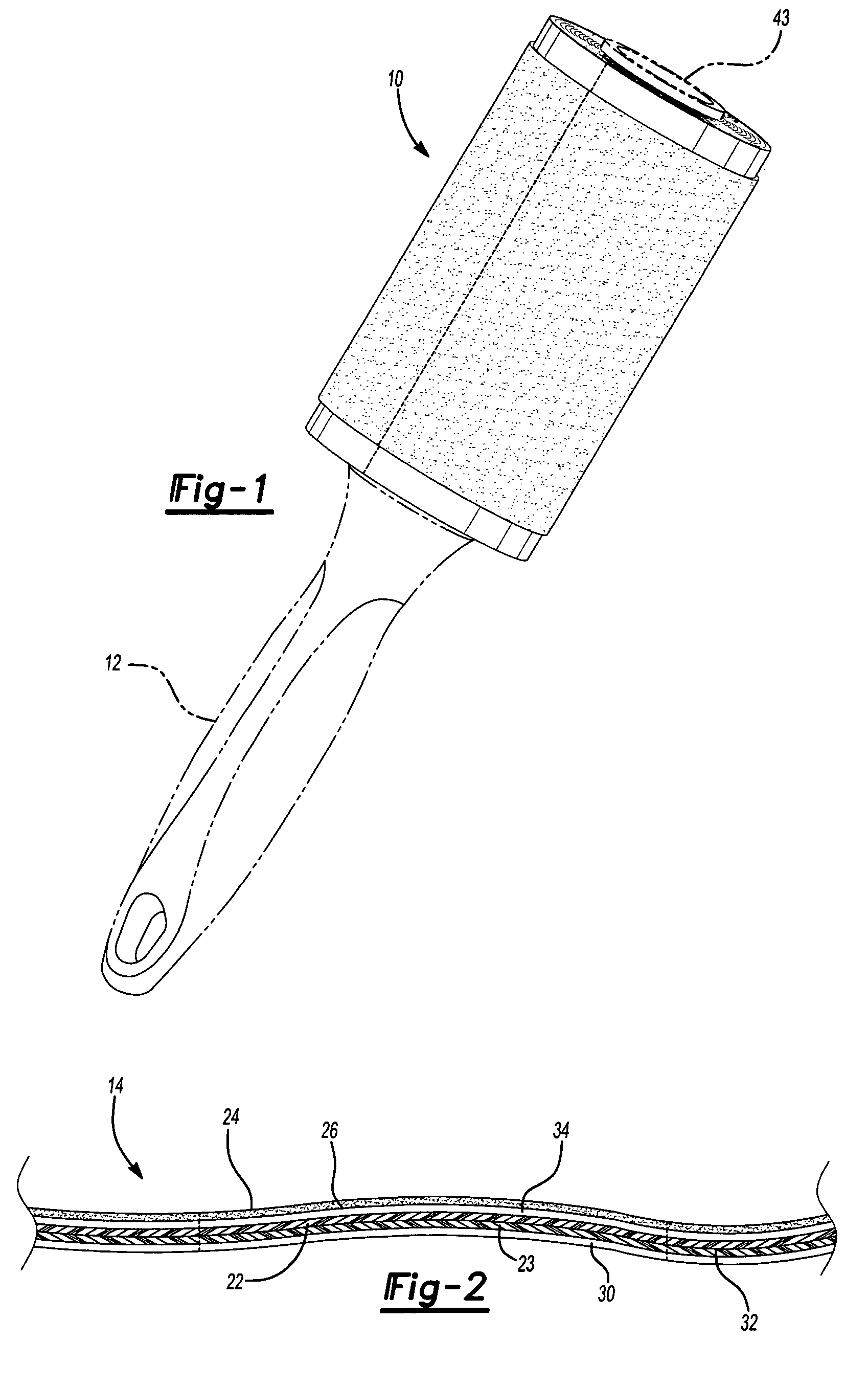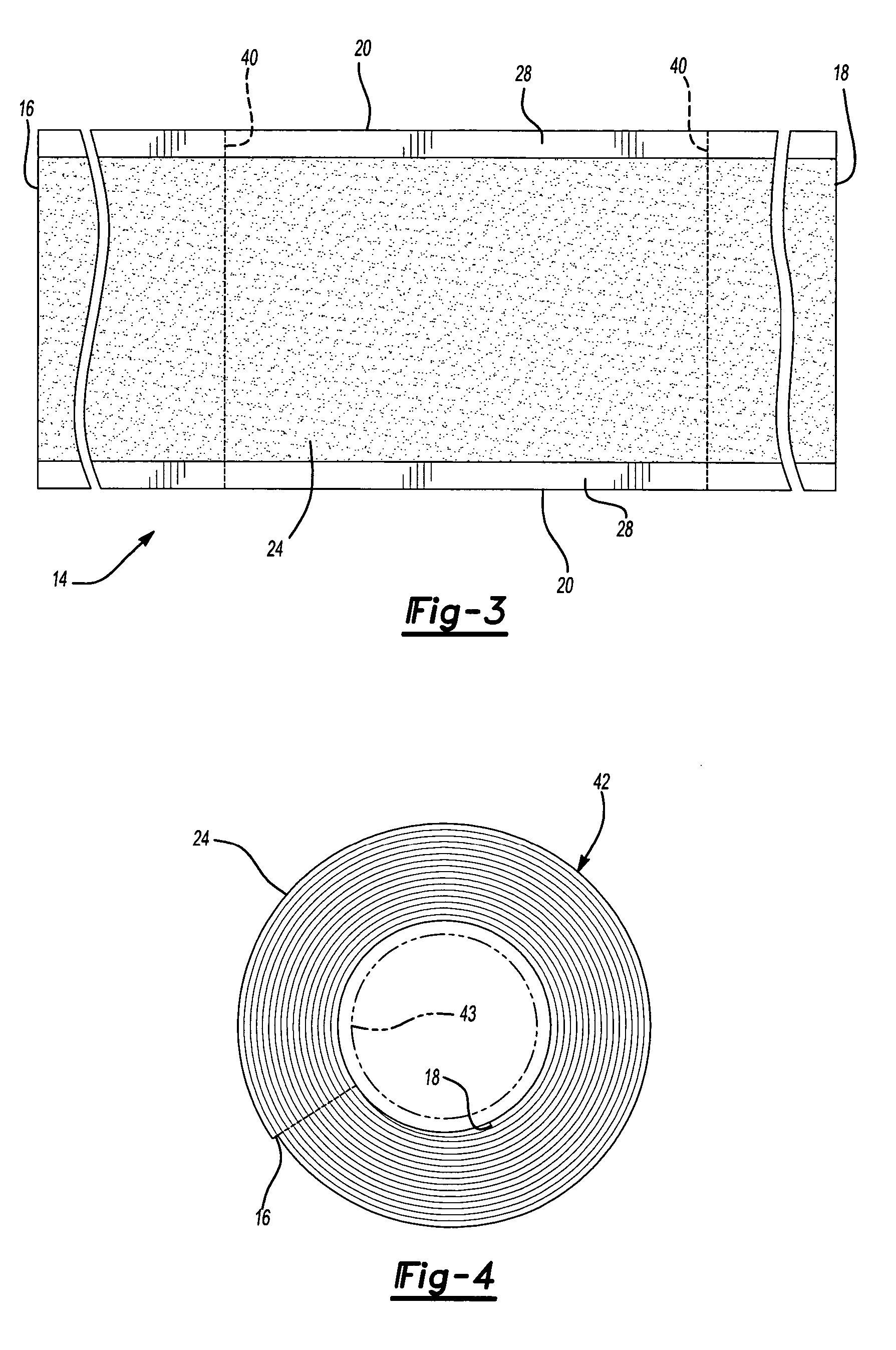Roller construction for detritus removal
a technology of detritus removal and construction, which is applied in the direction of shafts and bearings, household cleaners, artistic surface treatment, etc., can solve the problems of inability to conform to non-planar surfaces, inability to effectively remove detritus from the surface, and inability to retain electrostatic charge of paper backing used for stripping, etc., to achieve enhanced detritus removal, effective removal of detritus from the surface, and better carrier
- Summary
- Abstract
- Description
- Claims
- Application Information
AI Technical Summary
Benefits of technology
Problems solved by technology
Method used
Image
Examples
Embodiment Construction
[0024]With reference first to FIG. 1, a preferred embodiment of the detritus removal roller construction 9 of the present invention is shown and comprises an adhesive roller construction 10 mounted to a handle 12 so that the roller construction 10 rotates relative to the handle 12. Furthermore, as illustrated in FIG. 1, the adhesive roller construction 10 is illustrated as a lint roller. No undue limitations, however, should be drawn therefrom since the adhesive roller construction 10 can also be used for many other applications, such as floor sweepers and the like.
[0025]With reference now to FIGS. 2 and 3, the adhesive roller construction 10 comprises an elongated strip 14 having a first end 16, a second end 18 and two spaced apart sides 20. The elongated strip 14, furthermore, includes both a backing layer 22 and an adhesive layer 24 overlying at least a portion of one side 26 of the backing layer 22. However, as best shown in FIG. 3, the adhesive layer 24 is preferably spaced inw...
PUM
 Login to View More
Login to View More Abstract
Description
Claims
Application Information
 Login to View More
Login to View More - R&D
- Intellectual Property
- Life Sciences
- Materials
- Tech Scout
- Unparalleled Data Quality
- Higher Quality Content
- 60% Fewer Hallucinations
Browse by: Latest US Patents, China's latest patents, Technical Efficacy Thesaurus, Application Domain, Technology Topic, Popular Technical Reports.
© 2025 PatSnap. All rights reserved.Legal|Privacy policy|Modern Slavery Act Transparency Statement|Sitemap|About US| Contact US: help@patsnap.com



